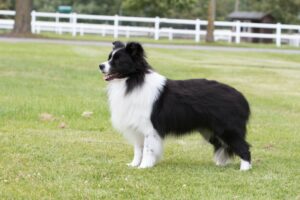
The Labrador retriever, first acknowledged as a distinct breed by the English Kennel Club, gradually captured the hearts of people with its unique characteristics. Soon after, the American Kennel Club also recognized Labradors as a separate breed in 1903. According to the American Kennel Club’s breed standard, Labrador retrievers, often referred to as “labs,” belong to the medium-sized sporting dog breed. Labs are available in various colors, including black, yellow, and chocolate, and they boast a double fur coat. The outer coat serves as protection against weather changes, while the inner coat helps regulate body temperature. However, their fur is not excessively long, so it doesn’t tangle easily. For all the dog lovers out there eagerly seeking information about the most popular dog breed, we present these fascinating Labrador retriever facts.
Fun Labrador Retriever Facts
What Do They prey On? unknown | What Are Their Main Threats? Injuries and Diseases |
What Do They Eat? Omnivores | What Is Their Conservation Status? Not listed |
Average Litter Size? 5-10 | Where You’ll Find Them? Homes, Military Bases, Police Force |
How Much Do They Weigh? 55-80 lb (25-36 kg) | Locations Worldwide |
How Long Are They? Unknown | Kingdom Animalia |
How Tall Are They? 21-23.6 in (53-60 cm) | Genus Canis |
What Do They Look Like? Black, yellow, and chocolate | Class Mammalia |
Skin type fur | Family Canidae |
Originally bred as companions for fishermen, Labrador retrievers played a crucial role in retrieving escaped fish. They were crossbred with other water dogs from the local area, inheriting certain traits from their ancestors. Some of these dogs were eventually transported to England due to their remarkable utility.
Temperament
The Labrador Retriever is renowned for its friendly and outgoing temperament. Known for their joyful nature, Labs are eager to please and have an inherent desire to interact with people. They are highly sociable and get along well with children, strangers, and other animals. Labradors are typically gentle, patient, and adaptable, making them excellent family pets and therapy dogs. Their intelligence and willingness to learn make them highly trainable. With their affectionate and even-tempered nature, Labs have rightfully earned their reputation as one of the most beloved and popular dog breeds worldwide.
Energy level
Labrador Retrievers are known for their high energy levels. They are active and athletic dogs that require regular exercise and mental stimulation. Labs excel in activities like fetching, swimming, and long walks. Their energy and enthusiasm make them great companions for active individuals and families who can provide them with ample opportunities for exercise.
Are they good with children?
Yes, Labrador Retrievers are generally very good with children. They are known for their friendly and patient nature, making them excellent companions and playmates for kids. Labs often form strong bonds with children and are known for their gentle and tolerant behaviour around them. They have a natural affinity for family life and are typically affectionate and protective of their human family members, including children.
Are they good with seniors?
Labrador Retrievers can be great companions for seniors. Their friendly and gentle nature makes them suitable for older adults seeking a loyal and affectionate pet. Labs provide companionship, encourage physical activity, and can help reduce stress. However, their energy levels may require seniors to have the ability to meet their exercise needs or have assistance with daily activities.
Do they need long walks?
Labrador Retrievers have a high energy level and require regular exercise, including long walks. Daily walks help them burn off energy, maintain a healthy weight, and stimulate their minds. Engaging in physical activity also contributes to their overall well-being, mental stimulation, and helps prevent behavioural issues that can arise from pent-up energy.
Diet
Labrador Retrievers have a hearty appetite and should be fed a balanced diet. High-quality dog food with appropriate proportions of protein, fats, and carbohydrates is recommended. The frequency of feeding depends on factors like age, size, and activity level, but typically, adult Labs are fed two meals a day to maintain their nutritional needs and prevent overeating. Consultation with a veterinarian can help determine the specific dietary requirements for individual Labs.
Exercise
Labrador Retrievers have high exercise requirements due to their energetic nature. They thrive with daily physical activity, such as brisk walks, jogging, swimming, or playing fetch. Regular exercise helps them maintain a healthy weight, prevents boredom-related behaviours, and promotes their overall physical and mental well-being. Providing varied and stimulating exercise routines is essential for their happiness and health.
Ideal environment
The ideal environment for Labrador Retrievers is one that allows for ample space and opportunities for exercise. A house with a securely fenced yard is desirable, as Labs love to explore and play outdoors. Proximity to parks, beaches, or open spaces where they can run, and swim is advantageous. Labs are adaptable and can thrive in both urban and rural settings, if their exercise needs are met. However, they are happiest when they have plenty of room to roam and engage in physical activities that match their energy level.
Training and behaviour
Labrador Retrievers are highly intelligent and trainable dogs. They thrive on positive reinforcement training methods that reward good behaviour and discourage unwanted behaviours. Early socialization is crucial to help them develop good manners and adaptability around people and other animals.
Labs are known for their exuberant nature, so consistent training is essential to channel their energy and prevent them from becoming overly boisterous. Mental stimulation, such as puzzle toys and obedience exercises, is vital to keep them engaged and prevent boredom-related behaviours. Labs also benefit from regular routines and clear boundaries to establish a well-behaved and balanced temperament.
Grooming requirements
Labrador Retrievers have relatively low grooming requirements. They have a short, dense double coat that sheds moderately throughout the year. Regular brushing helps minimize shedding and keeps their coat in good condition. Labs only need occasional baths unless they get particularly dirty. Additionally, routine care such as nail trimming, ear cleaning, and dental hygiene should be maintained for their overall health and well-being.
Why are Labradors the best pets?
Labradors are often considered the best pets due to their numerous admirable qualities. They have a friendly and sociable nature, making them excellent companions for individuals and families. Their gentle and patient demeanour makes them great with children and other pets. Labs are highly intelligent and trainable, making them versatile and adaptable to various lifestyles. Their high energy level and love for outdoor activities encourage an active lifestyle. Additionally, their loyalty, affection, and joyful disposition bring immense happiness and companionship, making Labradors a beloved choice for many pet owners.
Discover a delightful collection of family-friendly animal facts we have thoughtfully curated! Immerse yourself in the fascinating world of mammals, exploring captivating creatures like the charming Pitbull Chihuahua mix and the adorable Cheagle. Expand your knowledge and indulge in the joy of learning as you uncover intriguing details about these unique and lovable beings. Join us on this captivating journey and unravel the wonders of the animal kingdom!




